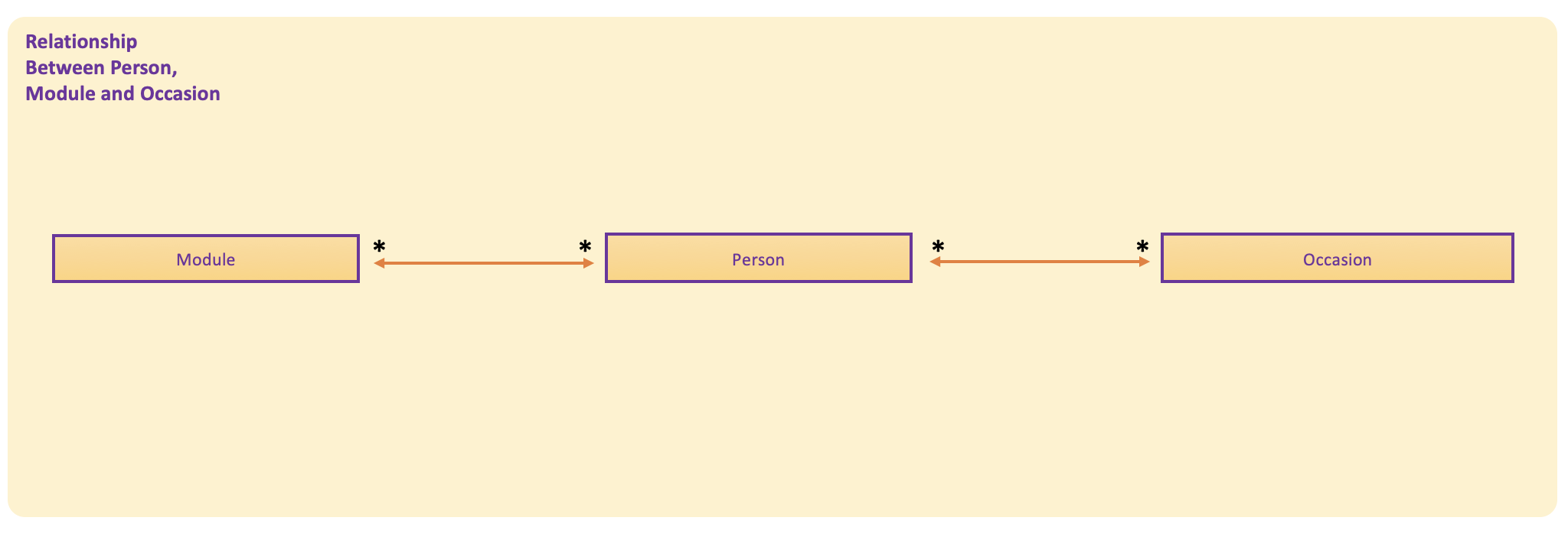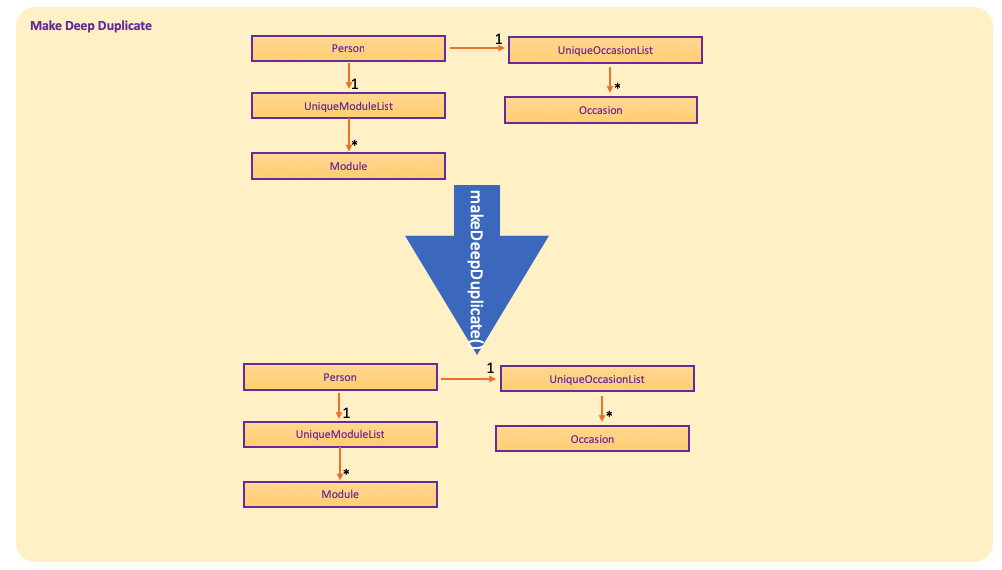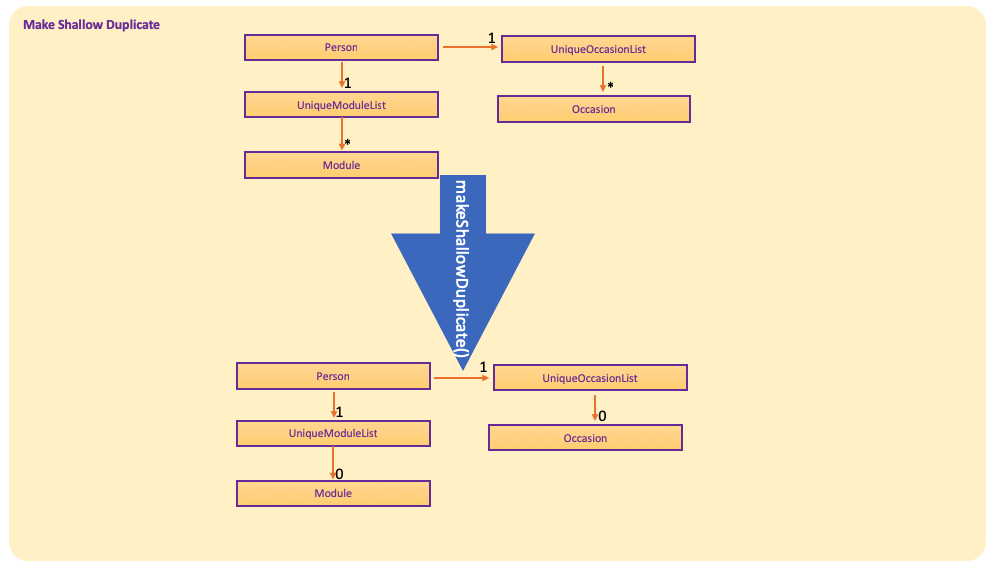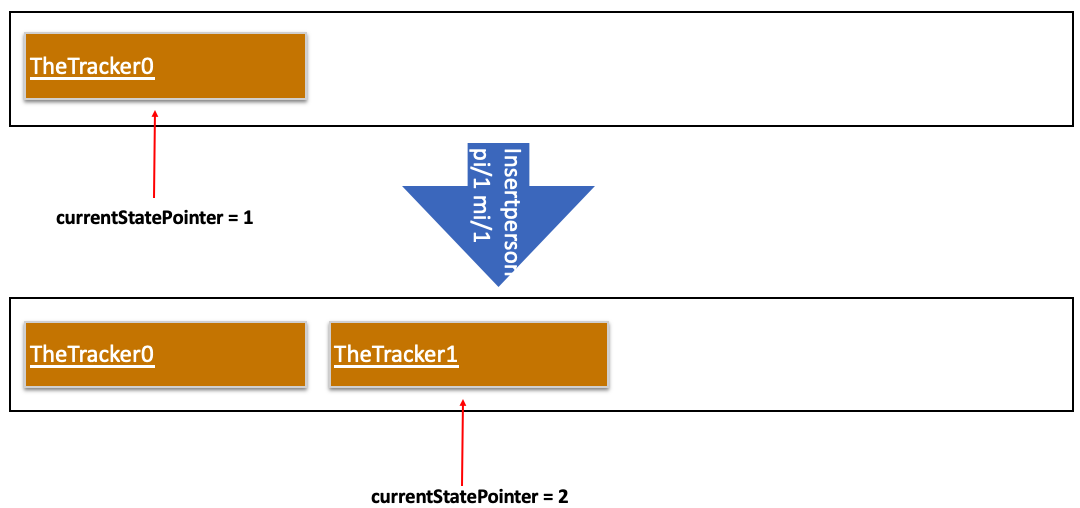Overview
TheTracker is an application specifically built for NUS students. Allowing a student to keep track of his/her own occasions, modules and keep up to date with his/her friends.
Summary of contributions
-
Major enhancement: implemented the insertperson feature
-
What it does: Allows the user to build an association between a person and a module, or a person and an occasion.
-
Justification: This feature improves the product significantly as the user can now conveniently register his/her associated persons with modules and occasions. This makes TheTracker more of a holistic and useful product.
-
Highlights: This enhancement affects the existing delete and edit commands as now an edit to an entity must edit all the entities associated with it as well.
-
Credits: {All abstractions, logic was conceived of solely by me}
-
-
Minor enhancement: Added the new UI panels to display the contents of modules and occasions.
-
Code contributed: [Contributed Code]
-
Other contributions:
-
Project management:
-
Managed releases
v1.1-v1.2(2 releases) on GitHub and managed Pull Request to upstream CS2103 Main Repo for assessment by tutors.
-
-
Tools:
-
Integrated Travis CI into the repo.
-
-
Contributions to the User Guide
Given below are sections I contributed to the User Guide. They showcase my ability to write documentation targeting end-users. |
Inserting a Person: insertperson
Inserting a person into a module: insertperson
A command to allow the user to build an association between a module and a person within TheTracker by inserting
a person bi-directionally into a module.
Format:
insertperson pi/PERSON_INDEX mi/MODULE_INDEX
Example:
-
insertperson pi/1 mi/1Builds an association between the firstpersonandmoduleby insertingperson1 bi-directionally intomodule1.
Inserting a person into an occasion: insertperson
Builds an association between an occasion and a person within TheTracker by inserting
a person bi-directionally into an occasion.
Format:
insertperson pi/PERSON_INDEX oi/OCCASION_INDEX
Example:
-
insertperson pi/1 oi/1Builds an association between the firstpersonandoccasionby insertingperson1 bi-directionally intooccasion1.
Contributions to the Developer Guide
Given below are sections I contributed to the Developer Guide. They showcase my ability to write technical documentation and the technical depth of my contributions to the project. |
To facilitate this the underlying structure of Person, Module and Occasion have to
be linked in a manner that will facilitate injections of one entity bi-directionally into another.
The following class diagram depicts this structure:

UI component

API : Ui.java
The MainWindow is made up of parts e.g.CommandBox, ResultDisplay, PersonListPanel, StatusBarFooter, BrowserPanel etc. All these, including the MainWindow, inherit from the abstract UiPart class.
The UI component uses JavaFx UI framework. The layout of these UI parts are defined in matching .fxml files that are in the src/main/resources/view folder. For example, the layout of the MainWindow is specified in MainWindow.fxml
The UI component,
-
Executes user commands using the
Logiccomponent. -
Binds itself to some data in the
Modelso that the UI can auto-update when data in theModelchange. -
Responds to events raised from various parts of the App and updates the UI accordingly.
Duplication of Entities
To facilitate the ease of implementation of the following features, two important methods were conceived off: makeDeepDuplicate
and makeShallowDuplicate. These two helper methods allow a Person, Module and Occasion within TheTracker to be copied in
a different manner. The following image is a depiction of how makeDeepDuplicate works when it is called on a Person:

As can be seen from the above image makeDeepDuplicate creates a replica of a Person such that the respective Modules within the UniqueModuleList and
the Occasions within the UniqueOccasionList are also DeepDuplicated.
The following image depicts how makeShallowDuplicate works when it is called on a Person within TheTracker:

As can be seen from the above image makeShallowDuplicate creates a replica of a Person such that the respective UniqueModuleList and UniqueOccasionList
are empty.
InsertPerson feature
The InsertPerson command is an advanced feature for TheTracker. It enables a bi-directional insert of a Person into
either one of a module or an occasion.
Current Implementation
For the following example we will use InsertPerson command to insert a person, bi-directionally, into a module.
The usage for a bi-directional insert into an occasion is similar.
InsertPerson command extends the Command class and uses inheritance to facilitate implementation. It’s mechanism is
facilitated by VersionAddressBook. Below is the associated sequence diagram for the InsertPerson command:

When the user first opens up TheTracker it loads up an instance of a VersionAddressBook and initializes
the currentStatePointer to point at this instance of the TheTracker. When the user then executes the InsertPerson
command an entirely new copy of the state of TheTracker is created and inserted as a new VersionAddressBook with the
currentStatePointer being updated. Below is a diagram that depicts this:

The following steps represent the internal implementation of the InsertPerson command when inserting a Person into a Module:
-
Create a
DeepDuplicateand aShallowDuplicateof the Both thePersonand theModule -
Insert the
ShallowDuplicateof the module into theDeepDuplicateof thePerson’sUniqueModuleList -
Insert the
ShallowDuplicateof the person into theDeepDuplicateof theModule’sUniquePersonsList
Note: Further elaboration of the above implementation is discussed within the Design Considerations section.
Design Considerations
Why it is non-trivial:
-
For the feature to work coherently with
undo/redoas well aseditan entire new replica of state ofTheTrackermust be created with the relevant entities bi-directionally inserted after this command has been executed.
We cannot, however, make do with only makeDeepDuplicate in order to implement the InsertPerson feature.
The following scenario illustrates why:
-
Insertion of
PersonxintoOccasionywould causex’soccasion list to be populated byyandy’sperson list to be populated byx -
Insertion of
PersonxintoModulezwould causex’smodule list to be populated byzandz’sperson list to be populated byx. But if we insert a deep copy ofxintozthis would entail us replicatingy, which would entail us replicating the person list ofyand, thus,xand so the program will halt in an infinite regress until aStackOverFlowis thrown.
To avoid the above error, upon insertion of a Module into a Person the respective Module’s ShallowDuplicate is inserted.